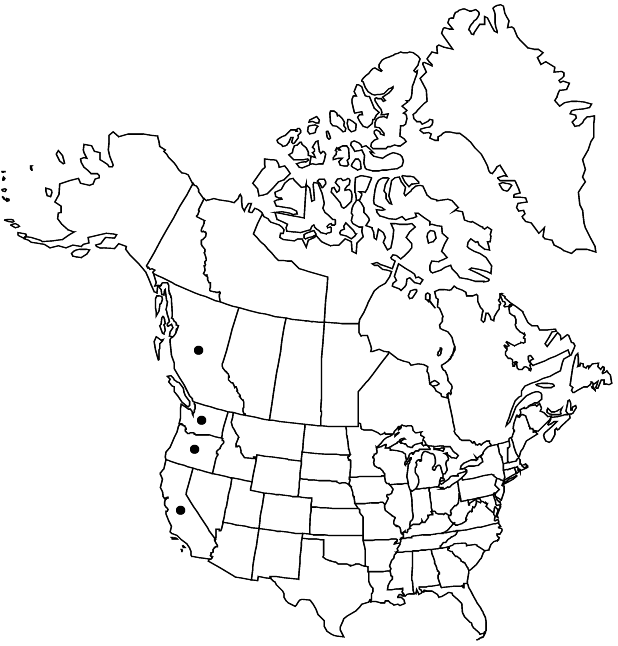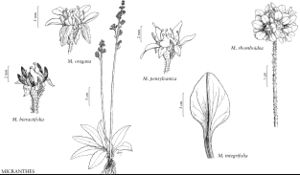Micranthes integrifolia
in N. L. Britton et al., N. Amer. Fl. 22: 137. 1905 ,.
Plants solitary or in clumps, (sometimes gynodioecious), often with bulbils on caudices, or short-rhizomatous. Leaves basal; petiole flattened, 0.5–4 cm; blade narrowly to broadly ovate, 2–7 cm, ± leathery, base attenuate, margins entire or minutely denticulate, usually ciliate, surfaces sparsely to moderately hairy. Inflorescences (15–)20+-flowered, open to ± congested, conic thyrses, (usually branched, lateral cymules ± open), 12–35 cm, densely pink- to purple-tipped stipitate-glandular. Flowers: sepals spreading to slightly reflexed, ovate; petals white, not spotted, obovate, clawed, 2–4 mm, longer than sepals; filaments linear, flattened; pistils connate to 1/2 their lengths; ovary 1/2+ inferior. Capsules reddish or purplish, folliclelike. 2n = 38.
Phenology: Flowering late winter–spring.
Habitat: Vernally moist meadows, grassy slopes, rock outcrops
Elevation: 0-1800 m
Distribution

B.C., Calif., Oreg., Wash.
Discussion
The occasional occurrence of sterile pollen has been noted in this as well as in other species of Micranthes (as Saxifraga, K. I. Beamish 1961). Some populations exhibit gynodioecism (P. E. Elvander 1982).
Selected References
None.
